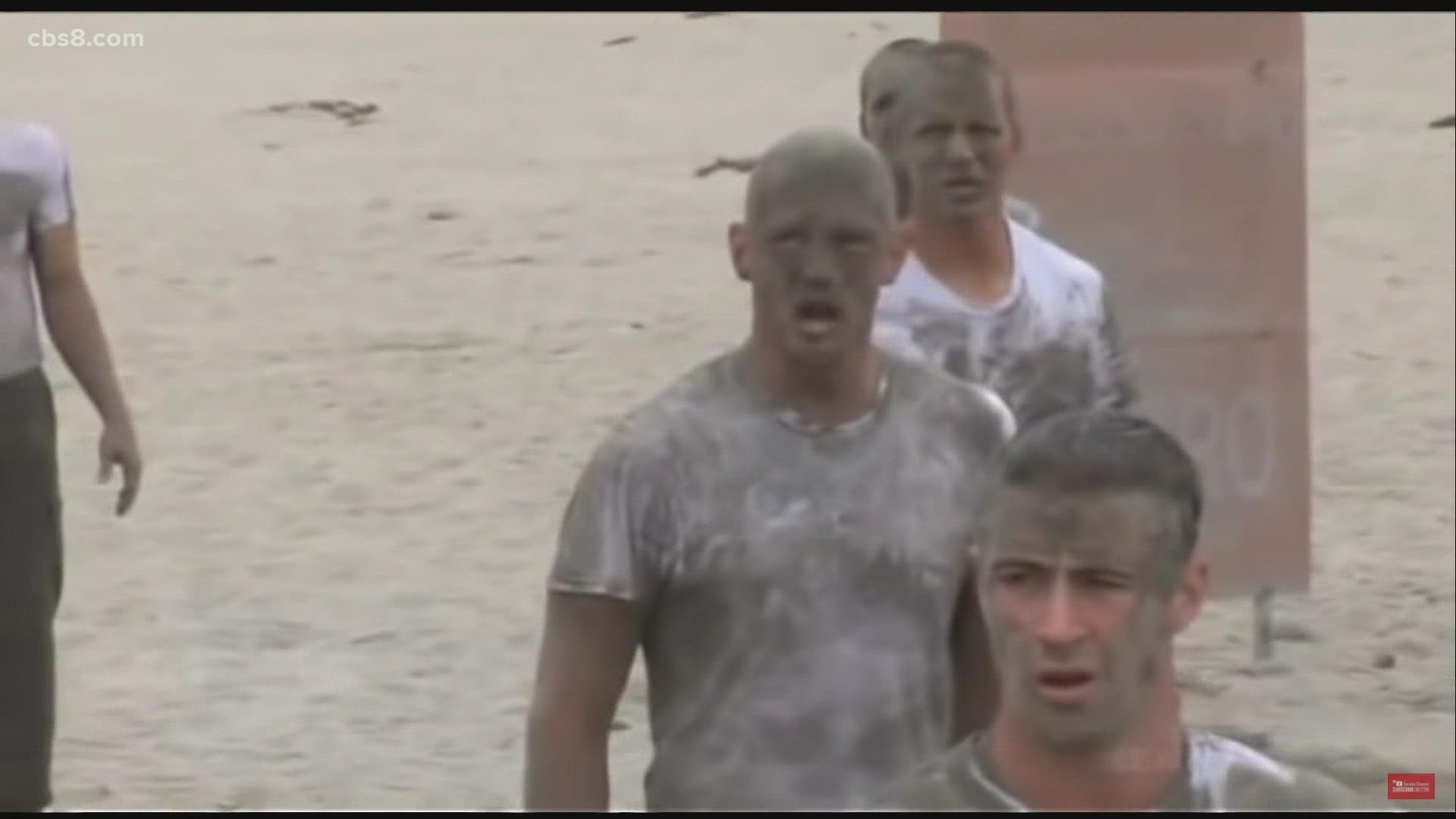SAN DIEGO — The Navy’s training for SEALS, called BUD/S, is known as one of the most arduous trials in the military, testing the physical and mental strength of SEAL candidates. Three weeks into the first phase of training, “Hell Week” is an exhaustive test of someone’s commitment to becoming a Navy SEAL.
“I call it a gut check to see who really wants to be there and is not going to quit regardless of how miserable they are,” said former Navy SEAL Paul Anderson, who retired from the Navy in 2012. “It’s very, very difficult during ‘Hell Week.’ You get 4 hours of sleep. You’re not allowed to have any caffeine. Throughout the entire week, you’re hungry, you’re cold, you’re sandy, you’re wet, just the lack of sleep. Constantly getting pushed harder and harder.”
In this grueling 5-day stretch, each candidate runs more than 200 miles and sleeps only a total of four hours during the entire time.
“The confusion, the tiredness, the hallucinations,” said Anderson. “You gotta continually prove yourself, get stronger, get faster. And if you don’t, you run the risk of being dropped.”
Last Friday, 24-year-old Kyle Mullen died at the end of "Hell Week." According to Paul, safety measures and daily checkups with doctors make this kind of tragedy a rare occurrence, but when it does happen, it hurts the whole SEAL community.
“When something like this happens, it’s horrible,” said Anderson. “Just the whole community is shocked at what happens when somebody dies in training.”
The BUD/S course is regarded as one of the toughest training regimens in the U.S. military. It prepares candidates for dangerous situations they may face later on.
“You have to dig down deep in your guts,” said Anderson. “You have to have that intestinal fortitude to push forward, to keep going no matter how tired you are, no matter how cold you are. It’s in your gut and in your heart and in your head.”
The rigorous schedule involves at least 20 hours of physical training each day.
“You’re doing the surf passes with your boats, in and out of the surf zone, paddling them out, paddling them back in, putting them on your head, running down the beach with them. We have these races and it pays to be a winner. If your boat crew wins, you might be able to sit down for 10 minutes and get a break. And if you don’t win, you know, you have to pay for it,” said Anderson. “You have to work as a team during these evolutions because if you don’t, your whole boat crew’s just going to fall apart so if everyone isn’t carrying their own weight, then everyone else suffers.”
Toward the end of "Hell Week," candidates face what’s called the "demo pit."
“They pump this fenced-in area full of water and they have this rope across, and you’re supposed to try to do this overhand rope climb. The instructors are yanking and throwing on those ropes so it’s literally impossible to get across,” said Anderson. “They’re throwing smoke grenades and all this other stuff in the water and it’s just this muddy mess.”
One of the biggest takeaways from BUD/S training and "Hell Week" is how to work together under difficult circumstances and succeed as a team.
“I’m not going to quit. I’m not going to leave anyone behind,” said Anderson. “You’re a cohesive unit that works so well together. You’ve been with that group of guys for so long that you’ll probably know those people better than you know anybody in the rest of your life.”
WATCH RELATED: Navy identifies SEAL candidate who died following training

